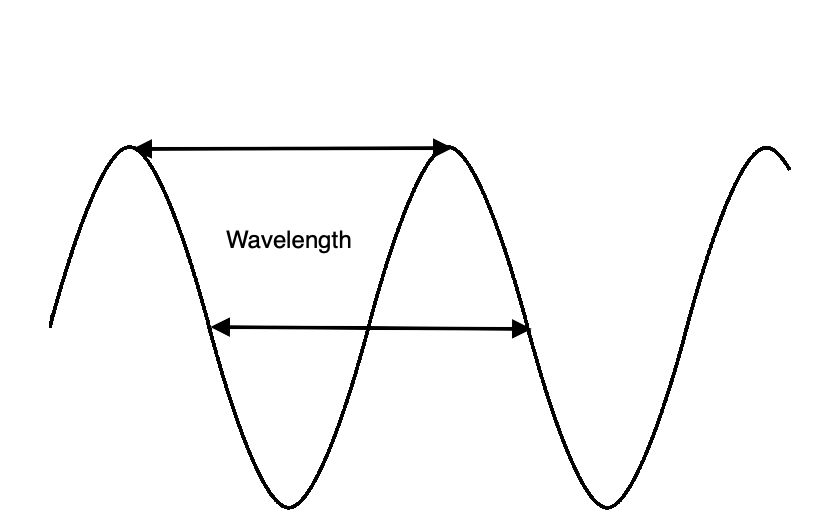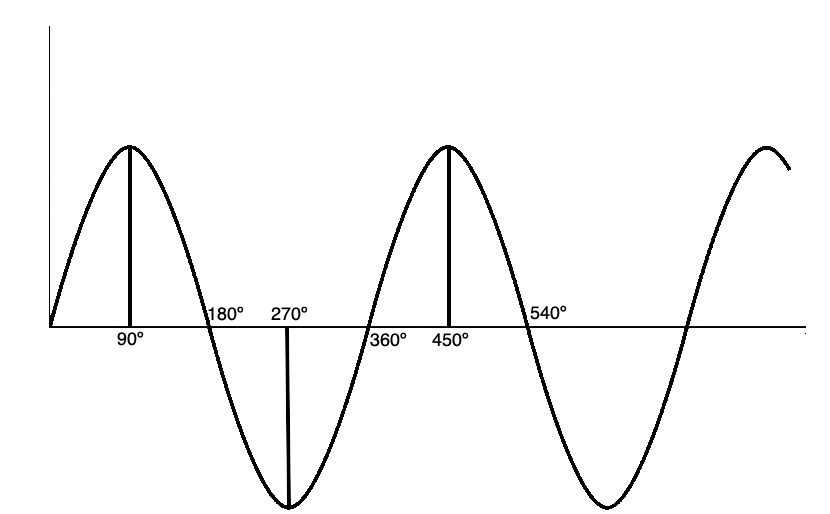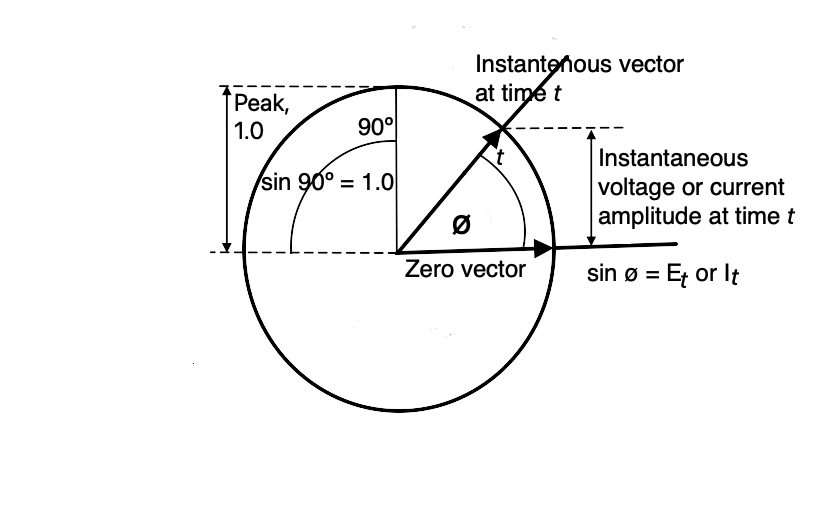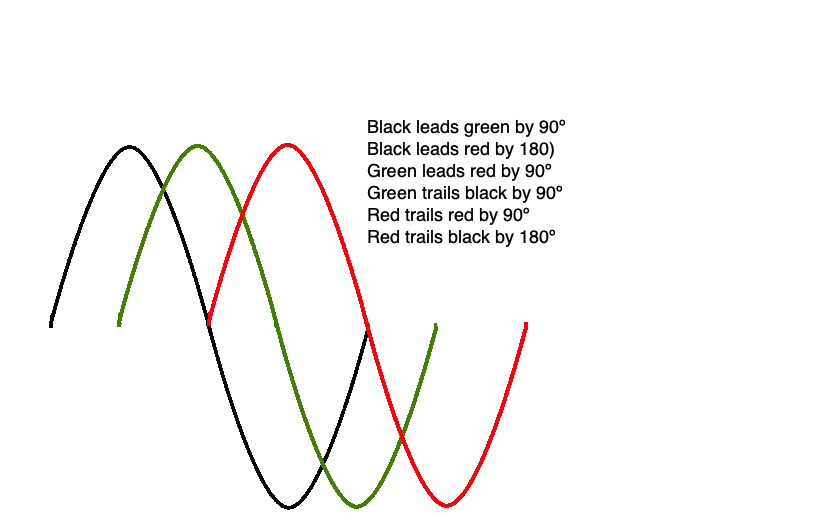Recall from the section on DC that the direct current flow does not reverse
direction or is interrupted in time. On the other hand, AC or alternating
current, does reverse direction, from positive to negative, or from positive to
less positive, or negative to less negative. Alternating current propagates
through wires with less resistance (hence power loss through heat) than does DC.
AC power transmission allows there to be much greater distances between the
point of power generation to the point of power consumption. An epic struggle of
philosophy occurred in the late 1800’s between Thomas Edison (proponent of DC
and inventor of the modern light bulb) and Nikola Tesla (proponent of AC power
distribution). Tesla won that battle, principally because of cost. AC power is
less expensive to transmit long distances than DC. Though AC is useful for
direct use as a source of power for heating and lighting, DC is the preferred
power source for most electronics. AC is easily converted to DC with just a few
components while converting DC to AC requires a bit more trouble and circuitry.
Current performs the work of electricity. Voltage is the pressure applied to the
current. Alternating current or AC reverses direction of flow, from negative to
positive, then positive to negative. How often this reversal occurs per second
determines the frequency of the alternation. If only one reversal per second
occurs, the frequency is 1 Hz (Hertz is the name for frequency instead of Cycles
Per Second – CPS – from years ago). If the reversal occurs 60 times per second,
the measurement is 60 Hz. Ranges of frequencies have been characterized as
“spectrum bands”. 0 to 30,000 Hz (0 to 30 KHz, Extremely, Super, Ultra, Very,
and Low Frequency) is considered to be the audio spectrum; 30,000 (30 KHz) to
300,000 (300 KHz) Hz is called Low Frequency (LF); 300,000 (300 KHz) to
3,000,000 (3 MHz) is called Medium Frequency radio frequency (MF) spectrum;
3,000,000 to 30,000,000 (3 MHz) to 30 MHz) is called High Frequency (HF) RF;
30,000,000 (30 MHz) to 300,000,000 (300 MHz) is called Very High Frequency
(VHF); 300,0000,000 (300 MHz to 3,000,000,000 (GHz) is called (Ultra High
Frequency UHF). Higher frequency bands have similar names.
There are three types of frequency measurement: rotational, angular, and
spatial. Rotational frequency usually denoted by the Greek letter ν (nu), is
defined as the instantaneous rate of change of the number of rotations N, with
respect to time: ν = dN/dt; it is a type of frequency applied to rotational
motion. Angular frequency usually denoted by the Greek letter ω (omega), is
defined as the rate of change of angular displacement (during rotation), Θ
(theta), or the rate of change of the phase of a sinusoidal waveform (notably in
oscillations and waves), or as the rate of change of the argument of the sine
function:
ƒ = 1/T (oscillation, waves, or harmonic motion)
ω = 2πƒ (angular frequency in radians)
ν = dN/dt (rotational frequency)
k = 2π/λ or 2πξ where (ξ=1/λ) (spatial frequency)
The frequency of AC is measured through one complete cycle, from positive peak
to positive peak, or negative peak to negative peak, or from when the signal
passes through the 0 Y axis to the next time it passes through that axis.
As one cycle completes, it passes through 360 angular degrees of phase. One
positive peak, or one negative peak completes 180 degrees of angular phase. The
phase measured from the point the wave passes through the 0 Y axis to the next
peak is 90 degrees of phase angle.
Rotating vectors can be used to indicate the instantaneous value of voltage or
current. The rational distance between the zero vector and the instantaneous
vector length (from 0.0 to 1.0 if the rotational angle is less than or equal to
90º, or 0.0 to -1.0 if the rotational angle is greater than 90º) of the signal
under measurement is equal to the sin of the rotational angle times the peak
value.
Phase is measured from a starting point on the waveform, usually the crossing
point of the 0 point of the Y axis. We will define that point as 0º. As the
waveform progresses in time, we pass through 90º at the first peak, then 180º at
the next crossing of the 0 point of the Y axis, then 270º at the negative peak,
and finally the 0 crossing point of the Y axis agin. We’ve completed a full 360º
of phase transition.
The phases of two of more signals may be compared from their individual 0 Y axis
crossing points. If the black wave is our reference wave, the other colors of
waves cross the 0 Y axis at different times, leading or lagging the reference
crossing of the black trace.
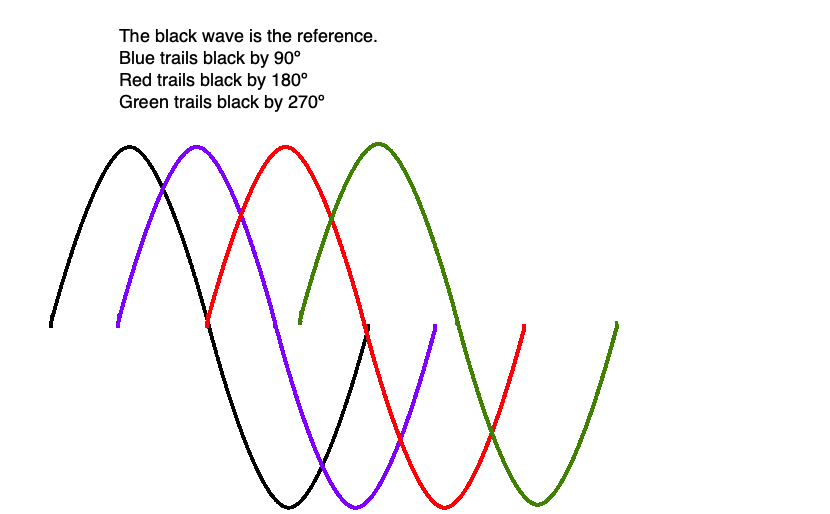
73… W3SEH


